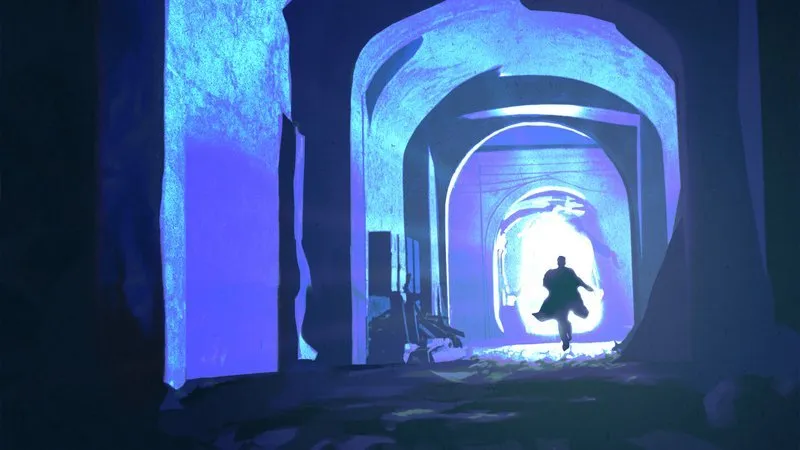
The Language of Hollywood: Storytelling Sound and Color 
This online course explores how changes in film technology have shaped popular Hollywood storytelling. From the transition to sound and the introduction of color, to the work of major directors and genres from the studio era, students will gain insight into the craft of filmmaking and how tools shape art. Through this educational experience, they will learn how business, technology, and art intersect in popular cinema. ▼
ADVERTISEMENT
Course Feature
![]() Cost:
Cost:
Free
![]() Provider:
Provider:
Coursera
![]() Certificate:
Certificate:
Paid Certification
![]() Language:
Language:
English
![]() Start Date:
Start Date:
2nd Feb, 2015
Course Overview
❗The content presented here is sourced directly from Coursera platform. For comprehensive course details, including enrollment information, simply click on the 'Go to class' link on our website.
Updated in [March 06th, 2023]
This course, The Language of Hollywood: Storytelling Sound and Color, explores how changes in film technology have impacted popular Hollywood storytelling. Students will learn about the transition to sound and the introduction of color, and how these changes brought new opportunities and challenges to filmmakers. Major directors and genres from the studio era will be surveyed, and the course will point forward to contemporary American cinema. The aim of the course is to illuminate popular cinema as the intersection of business, technology, and art. Through film history, students will gain an understanding of the craft of filmmaking and how tools shape art. This online educational experience is not equivalent to a college course, and subtitles for all video lectures are available in Turkish (provided by Koc University) and English.
[Applications]
Those who have completed this course can apply their knowledge of the history of Hollywood storytelling, sound, and color to their own filmmaking projects. They can use the knowledge gained to create more engaging and emotionally powerful films. Additionally, they can use the insights gained to better understand the craft of filmmaking and how tools shape art. Finally, they can use the course to gain a better understanding of the intersection of business, technology, and art in popular cinema.
[Career Paths]
1. Film Director: Film directors are responsible for the creative vision of a film, from the initial concept to the final product. They are responsible for casting, directing actors, and overseeing the production of the film. As technology advances, directors must stay up to date with the latest tools and techniques to create the most compelling visuals.
2. Cinematographer: Cinematographers are responsible for the visual look of a film. They work with the director to create the desired aesthetic, and use a variety of cameras and lenses to capture the desired shots. As technology advances, cinematographers must stay up to date with the latest tools and techniques to create the most visually stunning images.
3. Film Editor: Film editors are responsible for assembling the footage into a cohesive narrative. They work with the director to create the desired pacing and tone, and use a variety of editing software to create the desired effect. As technology advances, editors must stay up to date with the latest tools and techniques to create the most engaging stories.
4. Visual Effects Artist: Visual effects artists are responsible for creating the special effects in a film. They use a variety of software and techniques to create the desired effects, from explosions to digital environments. As technology advances, visual effects artists must stay up to date with the latest tools and techniques to create the most realistic and immersive effects.
[Education Paths]
1. Bachelor of Arts in Film Studies: A Bachelor of Arts in Film Studies is a degree program that focuses on the history, theory, and criticism of film. Students learn about the history of film, the development of film technology, and the impact of film on culture and society. They also learn about the production process, from pre-production to post-production, and the various roles involved in filmmaking. This degree is becoming increasingly popular as the film industry continues to grow and evolve.
2. Master of Fine Arts in Film Production: A Master of Fine Arts in Film Production is a degree program that focuses on the practical aspects of filmmaking. Students learn about the production process, from pre-production to post-production, and the various roles involved in filmmaking. They also learn about the technical aspects of filmmaking, such as cinematography, editing, and sound design. This degree is becoming increasingly popular as the film industry continues to grow and evolve.
3. Bachelor of Science in Digital Media: A Bachelor of Science in Digital Media is a degree program that focuses on the use of digital media in the production of films, television shows, and other forms of media. Students learn about the various tools and techniques used to create digital media, such as video editing, animation, and 3D modeling. They also learn about the various platforms used to distribute digital media, such as the internet, mobile devices, and social media. This degree is becoming increasingly popular as the digital media industry continues to grow and evolve.
4. Master of Arts in Media Studies: A Master of Arts in Media Studies is a degree program that focuses on the analysis and interpretation of media. Students learn about the various forms of media, such as television, film, and the internet, and how they are used to communicate messages and influence culture. They also learn about the various theories and methods used to analyze media, such as semiotics, psychoanalysis, and critical theory. This degree is becoming increasingly popular as the media industry continues to grow and evolve.
Course Provider

Provider Coursera's Stats at AZClass
This online course examines how changes in film technology have shaped popular Hollywood stories. From the transition to sound and the introduction of color, to working with major directors and genres of the studio era, students gain insight into the craft of filmmaking and how the tools shape the art. Through this educational experience, they'll learn how business, technology, and art intersect in popular cinema. Learners gain an understanding of the fundamentals of filmmaking, including cinematography, editing, and sound design. They will learn how to use these tools to create compelling stories and visuals.
Discussion and Reviews
0.0 (Based on 0 reviews)
Explore Similar Online Courses

Raspberry Pi Essential Training

Serverless Cloud Run Development

Python for Informatics: Exploring Information

Social Network Analysis

Introduction to Systematic Review and Meta-Analysis

The Analytics Edge

DCO042 - Python For Informatics

Causal Diagrams: Draw Your Assumptions Before Your Conclusions

Whole genome sequencing of bacterial genomes - tools and applications

Visual Storytelling for Film and Video Games

Cinematic Storytelling


Start your review of The Language of Hollywood: Storytelling Sound and Color